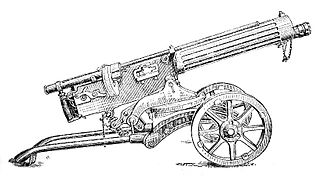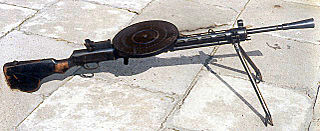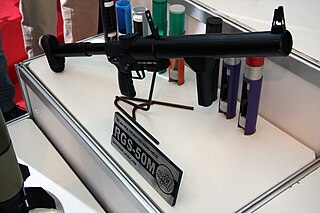 W
WThe 9M120 Ataka is an anti-tank guided missile (ATGM) originating from the Soviet Union. The NATO reporting name of the 9M120 missile is the AT-9 Spiral-2. It is the next major generation in the 9K114 Shturm family. The missile has radio command guidance and is also a Beam riding SACLOS. This missile's primary variant was designed to defeat tanks with composite armour and explosive reactive armor. The 9M120 Ataka system is often confused with the 9K121 Vikhr system, despite being different weapons systems developed by different companies. The former was designed by the KBM machine-building design bureau and manufactured by the Degtyarev plant. According to the Stockholm International Peace Research Institute, Russia exported the Ataka ATGM to Iran, Kazakhstan, and Slovenia.
 W
WThe 9M133 Kornet is a modern Russian man-portable anti-tank guided missile (ATGM) intended for use against main battle tanks. It was first introduced into service with the Russian army in 1998.
 W
WThe AEK-971 is a selective fire 5.45×39mm assault rifle that was developed at the Kovrov Mechanical Plant (KMZ) by chief designer Sergey Koksharov in the late 1970s and 1980s.
 W
WThe AGS-30 Atlant is a Russian-designed automatic grenade launcher currently in production in the Russian Federation and in service with the Russian armed forces.
 W
WThe Blüm machine gun was a Soviet training machine gun designed by Mikhail Nikolayevich Blüm around 1929. It was chambered for the .22 Long Rifle cartridge. The gun was developed in order to reduce the training costs in terms of ammunition and wear of the Soviet machine guns in service at the time.
 W
WThe Degtyaryov machine gun or DP-27 is a light machine gun firing the 7.62×54mmR cartridge that was primarily used by the Soviet Union, with service trials starting in 1927 followed by general deployment in 1928.
 W
WThe Kord-12.7 mm heavy machine gun is a Russian design that entered service in 1998 replacing the older NSV machine gun. Externally the weapon resembles the NSV; however, the internal mechanism has been extensively reworked, changing from a horizontally pivoting breech block to a rotating bolt design. Additionally the gas system has been changed and the muzzle baffle redesigned. These changes give the weapon reduced recoil compared with the NSV, allowing greater accuracy during sustained fire.
 W
WThe KPV-14.5 heavy machine gun is a Soviet designed 14.5×114mm-caliber heavy machine gun, which first entered service as an infantry weapon in 1949. In the 1960s, the infantry version was taken out of production because it was too large and heavy. It was later redesigned for anti-aircraft use, because it showed excellent results as an AA gun, with a range of 3,000 meters horizontally and 2,000 meters vertically against low flying planes. It was used in the ZPU series of anti-aircraft guns. Its size and power also made it a useful light anti-armour weapon on the BTR series of vehicles and the BRDM-2 scout car.
 W
WThe KSVK or Degtyarev sniper rifle is a 12.7mm anti-materiel rifle developed in Russia for the purpose of counter sniping and penetrating thick walls, as well as light armored vehicles.
 W
WThe PK, is a 7.62×54mmR general-purpose machine gun designed in the Soviet Union and currently in production in Russia. The original PK machine gun was introduced in 1961 and then the improved PKM in 1969 to replace the SGM and RP-46 machine guns in Soviet service. It remains in use as a front-line infantry and vehicle-mounted weapon with Russia's armed forces. The PK has been exported extensively and produced in several other countries under license.
 W
WThe PTRD-41 was an anti-tank rifle produced and used from early 1941 by the Soviet Red Army during World War II. It was a single-shot weapon which fired a 14.5×114 mm round. Although unable to penetrate the frontal armor of German tanks, it could penetrate the thinner sides of early-war German tanks as well as thinly armored self-propelled guns and half-tracks.
 W
WThe RGS-50M is a smoothbore single-shot break-action Russian 50 mm (2.0 in) grenade launcher manufactured by Degtyarev Plant.
 W
WVoskhod is the name of several types of motorcycles produced at the Degtyaryov Plant in the Russian town of Kovrov since 1965.